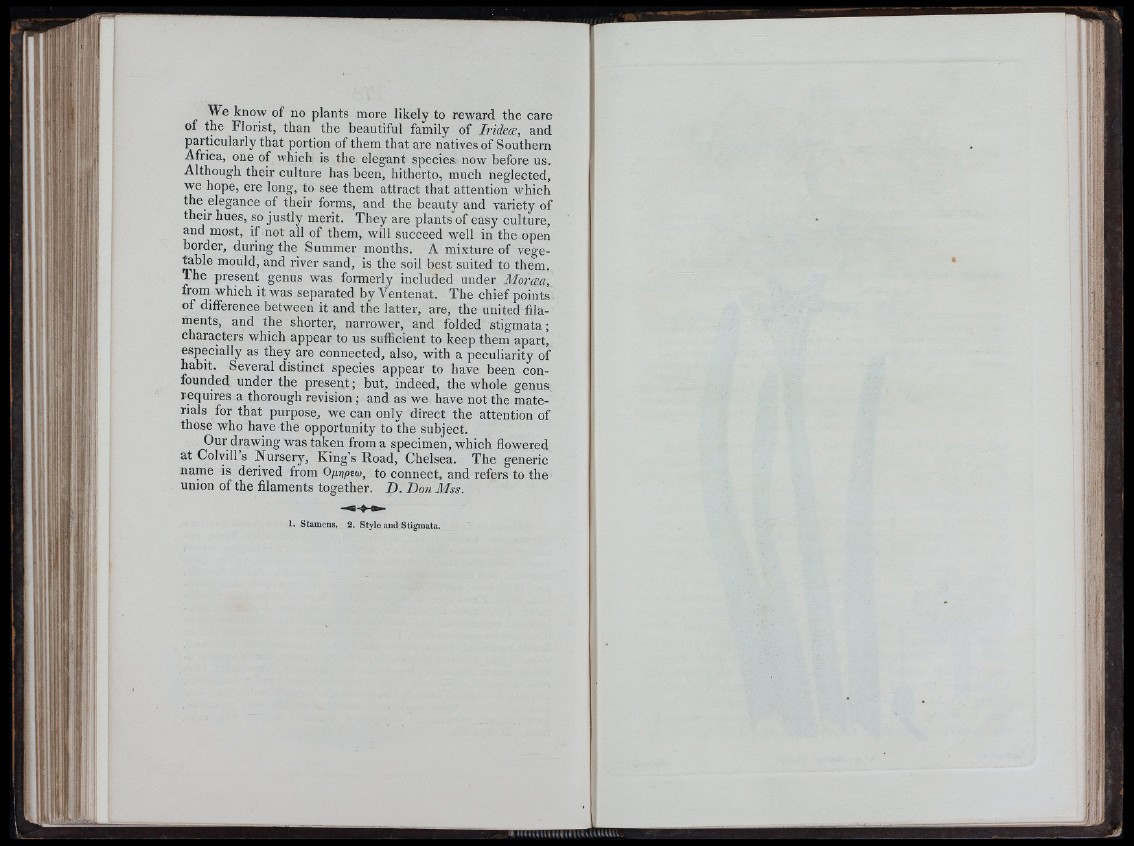
We know of no plants more likely to reward the care
of the Florist, than the beautiful family of Iridece, and
particularly that portion of them that are natives of Southern
Africa, one of which is the elegant species now before us.
Although their culture has been, hitherto, much neglected,
we hope, ere long, to see them attract that attention Avhich
the elegance of their forms, and the beauty and variety of
their hues, so justly merit. They are plants of easy culture,
and most, if not all of them, will succeed well in the open
border, during the Summer months. A mixture of vegetable
mould, and river sand, is the soil best suited to them.
Ih e present genus was formerly included under Morcea,
from which it was separated by Ventenat. The chief points
of difference between it and the latter, are, the united filaments,
and the shorter, narrower, and folded stigmata;
characters which appear to us sufficient to keep them apart,
especially as they are connected, also, with a peculiarity of
habit. Several distinct species appear to have been confounded
under the present; but, indeed, the whole genus
requires a thorough revision; and as we have not the materials
for that purpose, we can only direct the attention of
those who have the opportunity to the subject.
Our drawing was taken from a specimen, which flowered
at Colyill’s Nursery, King’s Road, Chelsea. The generic
name is derived from Opyptw, to connect, and refers to the
union of the filaments together. D. Don Mss.
1. Stamens. 2. S ty le and Stigmata.
:ii1